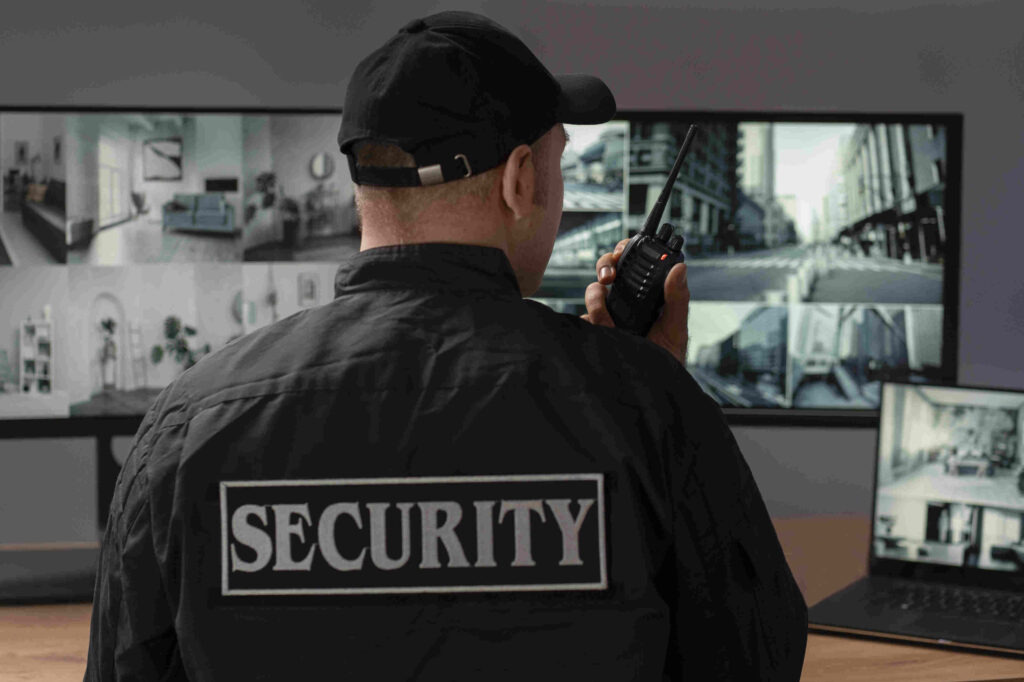In an ever-evolving world where technology and security concerns intersect, businesses and property owners are constantly searching for smarter, more efficient ways to safeguard their assets. Enter virtual guarding—an innovative solution that merges advanced technology with traditional security practices to offer unparalleled protection.
While traditional physical guards have long been the cornerstone of security, virtual guarding is transforming the landscape by utilizing cutting-edge tools like artificial intelligence (AI), surveillance cameras, and real-time monitoring to enhance safety and reduce costs. This blog delves into what virtual guarding is, how it works, and why it is quickly becoming a game-changer for businesses and residential properties alike.
What is Virtual Guarding?
Virtual guarding refers to a security solution that employs remote surveillance systems, often paired with AI and human intervention, to monitor properties in real time. Instead of relying solely on on-site personnel, a team of trained security professionals can monitor various sites simultaneously through a centralized control center. The result is a more proactive approach to security, which can help prevent crimes before they happen, rather than reacting after the fact.
Virtual guards are equipped with the ability to detect unusual activities, issue warnings, and even notify law enforcement or on-site security if necessary. By leveraging advanced technology, virtual guarding systems can provide comprehensive coverage 24/7, often at a fraction of the cost of hiring multiple physical guards.
How Does Virtual Guarding Work?
Virtual guarding operates through a network of cameras, sensors, and often AI-driven analytics software. These components are integrated to create a cohesive security system that monitors all activities in and around the property.
Here’s how a typical virtual guarding system works:
- Surveillance Setup: High-resolution cameras are strategically placed around the property to cover critical areas. These cameras are often equipped with night vision, motion sensors, and other smart features to detect and track any unusual movements.
- Real-Time Monitoring: The footage from these cameras is transmitted to a remote monitoring center, where security professionals keep an eye on the property in real-time. Many virtual guarding companies also offer AI-based software that analyzes the video feed and identifies suspicious behaviors or anomalies.
- Immediate Response: If the system detects any suspicious activity, the security team can take immediate action. This may involve issuing a verbal warning through loudspeakers, activating an alarm, or contacting local authorities for intervention. Some systems also notify on-site personnel, providing real-time updates to ensure swift action.
- Incident Documentation: In the event of a security breach, the system records high-quality video evidence, which can be used later for investigation purposes or insurance claims.
Benefits of Virtual Guarding
1. Cost-Effectiveness: One of the most compelling advantages of virtual guarding is its affordability. Traditional security services typically require multiple on-site guards, which can be a substantial financial burden, especially for businesses operating on a tight budget. Virtual guarding minimizes this cost by using a central monitoring system that covers multiple sites simultaneously, reducing the need for numerous physical guards.
2. 24/7 Coverage: Virtual guarding provides continuous, round-the-clock monitoring. Unlike human guards, who need breaks or shifts, virtual systems remain vigilant at all hours, ensuring uninterrupted security.
3. Proactive Security: Virtual guarding systems don’t just react to incidents; they are proactive in identifying potential threats before they escalate. AI-driven analytics can spot unusual patterns or behaviors, such as loitering, unauthorized entry, or even vandalism attempts, allowing security teams to intervene early.
4. Reduced Human Error: Human security guards, while valuable, can sometimes make mistakes due to fatigue or distractions. Virtual guarding, when supported by AI, eliminates these issues by constantly analyzing data. Responding based on predefined criteria, reduces the chances of oversight.
5. Flexibility: Virtual guarding systems can be customized to suit a wide range of security needs. Whether it’s protecting a large commercial building, a small business, or a residential community. The system can be scaled to fit the specific requirements of the property, ensuring that each location receives the level of security it needs.
6. Enhanced Safety for Guards: For properties that still require on-site guards, virtual guarding serves as an added layer of protection. Remote surveillance can alert on-site personnel to potential dangers, allowing them to avoid unsafe situations or respond more effectively.
Where is Virtual Guarding Most Useful?
Businesses across various industries and settings can use virtual guarding in versatile ways, including:
- Commercial Properties: Office buildings, retail centers, and warehouses benefit from the ability to monitor large spaces cost-effectively.
- Residential Communities: Gated communities, apartment complexes, and condominiums use virtual guarding.
- Construction Sites: Construction sites often attract theft or vandalism, but we can protect them. Remotely, minimizing the risk of expensive equipment losses.
- Healthcare Facilities: Hospitals and medical centers need constant security, and virtual guarding can provide 24/7 monitoring without disrupting patient care.
- Education Institutions: Schools and universities use virtual guarding to keep students and faculty safe. Particularly during off-hours or in areas that are difficult to monitor physically.
The Future of Virtual Guarding
With the continued advancement of technology, we expect virtual guarding systems to become even more sophisticated. AI and machine learning will likely play a larger role in detecting threats and analyzing patterns. Further improving the speed and accuracy of response times. Additionally, with the integration of drones and robotics, virtual guarding will expand its capabilities to cover larger areas.
Conclusion
In today’s fast-paced and ever-connected world, security is paramount. Virtual guarding offers a forward-thinking solution to protect properties and assets, combining the power of technology with human oversight. More businesses and property owners are embracing this innovative security approach, making virtual guarding the go-to choice for modern security needs. Whether you’re a small business owner or managing a large commercial property, virtual guarding can offer peace of mind, enhanced protection, and significant cost savings—making it a worthwhile investment in the future of security.
